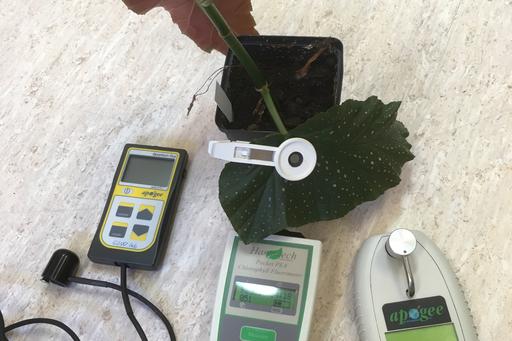
Uncovering ion transporters important for photosynthetic function
Short description
In natural habitats, plants and algae constantly experience rapid changes in the intensity of sunlight. This research project is dedicated to understand how photosynthesis is regulated in variable light by ion channels and transporters. We use Arabidopsis thaliana and Chlamydomonas reinhardtii as model organisms to study the phenotype of loss-of-function mutants using chlorophyll fluorescence, electron microscopy and molecular biology methods. Our findings will allow unravelling novel mechanisms of photosynthetic regulation at molecular and physiological levels, which are important for light acclimation in crop fields and bioenergy production
More about the project
The overall objective is to identify chloroplast ion transporters involved in the regulation of photosynthesis in plants and microalgae. Research on this topic is important because photosynthetic function is tightly coupled with growth, and we need to understand how photosynthetic components are integrated to operate in a dynamic environment. Ions (H+, K+, Cl−, Pi−, Mg2+, Ca2+) regulate photosynthesis since the involved protein machinery has strict requirements for pH and ion balance.
An increasing number of genes involved in chloroplast ion transport has been unravelled in plants, and only a few homologous algal genes have been studied thus far. In the proposed work we aim: a) to identify Mg2+ transporters regulating photosynthetic efficiency in plants; b) to determine how expression of K+ and Cl− transporter genes regulate plant acclimation to fluctuating light; c) to identify the algal genes involved in chloroplast Cl−, Pi−, K+ and Mg2+ fluxes. We will use Arabidopsis thaliana and Chlamydomonas reinhardtii as model organisms to study the intracellular location, gene expression, heterologous expression and the photosynthetic phenotype of loss-of-function mutants using chlorophyll fluorescence, electrochromic shift and state-of-the-art electron microscopy.
With such knowledge, we hope to achieve an understanding of how to use ion transporters to improve the energy efficiency of photosynthesis in engineered crop plants and microalgae.

Members
Cornelia Spetea Wiklund, professor
Emilija Dukic, PhD student
Kashif Mohd Shaikh, post-doc
Publications and media
Press release:
Reviews:
Research articles:
- K+ and Cl- channels/transporters independently fine-tune photosynthesis in plants
- Chloroplast magnesium transporters play essential but differential roles in maintaining magnesium homeostasis
- The Arabidopsis thylakoid chloride channel ClCe regulates ATP availability for light-harvesting complex II protein phosphorylation
- Photosynthetic and transcriptome responses to fluctuating light in Arabidopsis thylakoid ion transport triple mutant
Video (in Swedish): Om klorofyllfluorescens (Youtube) from "Fönster mot naturvetenskap"
